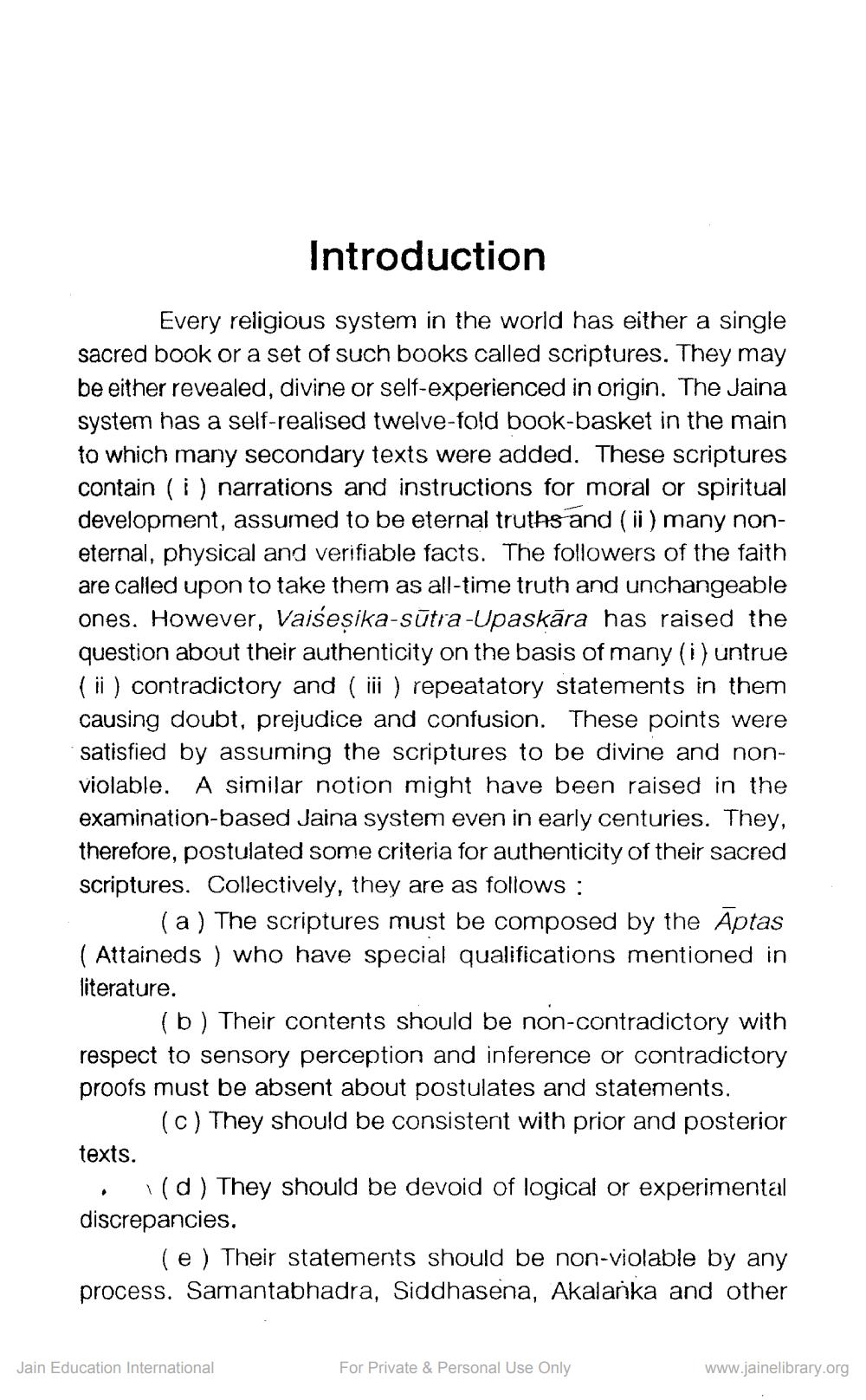________________
Introduction
Every religious system in the world has either a single sacred book or a set of such books called scriptures. They may be either revealed, divine or self-experienced in origin. The Jaina system has a self-realised twelve-fold book-basket in the main to which many secondary texts were added. These scriptures contain (i) narrations and instructions for moral or spiritual development, assumed to be eternal truths and (ii) many noneternal, physical and verifiable facts. The followers of the faith are called upon to take them as all-time truth and unchangeable ones. However, Vaiseṣika-sūtra-Upasķāra has raised the question about their authenticity on the basis of many (i) untrue (ii) contradictory and (iii) repeatatory statements in them causing doubt, prejudice and confusion. These points were Isatisfied by assuming the scriptures to be divine and nonviolable. A similar notion might have been raised in the examination-based Jaina system even in early centuries. They, therefore, postulated some criteria for authenticity of their sacred scriptures. Collectively, they are as follows:
(a) The scriptures must be composed by the Aptas (Attaineds) who have special qualifications mentioned in literature.
(b) Their contents should be non-contradictory with respect to sensory perception and inference or contradictory proofs must be absent about postulates and statements.
(c) They should be consistent with prior and posterior
texts.
1 (d) They should be devoid of logical or experimental discrepancies.
(e) Their statements should be non-violable by any process. Samantabhadra, Siddhasena, Akalanka and other
Jain Education International
For Private & Personal Use Only
www.jainelibrary.org




